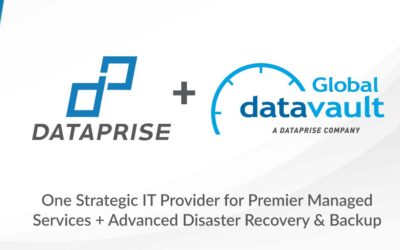Many organizations have annual disaster recovery (DR) test requirements, whether to run production operations from a secondary facility for several days or test the functionality of systems and applications running in a DR facility while production workloads run as usual. Every business should have a disaster recovery plan and perform a DR test, especially with recent virus and ransomware activity.
In the past, disaster recovery was much more complex. However, virtualization and cloud technologies significantly improved DR capabilities and the ability to run workloads in separate or multiple locations. While advantageous, it is crucial to check the functionality of systems, processes, and people resources.
How often should I perform a disaster recovery test?
Your business needs and requirements will determine the testing frequency, but an annual test is usually sufficient for many. It is essential to schedule the test well in advance, especially if it involves a third party. Finding time for all parties as the end of the year approaches will be difficult. If you make significant infrastructure or application changes, it may be worth performing an additional test.
What are the goals of a disaster recovery test?
While you may think the goals of a DR test are obvious, setting objectives helps keep tasks in scope and focused. Implementing a disaster recovery testing plan helps. You want to verify connectivity and application functionality and ensure you have the appropriate users available to assist. Believe it or not, running into problems during your DR test can be a good thing so you can resolve the issues. You do not want to encounter issues during an actual emergency!
Some issues we have discovered while performing DR tests for customers:
- Old, unsupported, or end-of-life operating systems
- Unsupported operating systems that are too new (beta, just released)
- Old versions of virtual machines and hypervisors
- Unpatched servers take a long time to bring up, as they apply patches automatically. (Note: Be sure to follow regular patching practices.)
- Incomplete networking documentation
Disasters can happen at any time. Performing a disaster recovery test allows organizations to prepare ahead of a crisis and remediate issues before a disaster occurs. In addition to applications and systems testing, tests will enable you to fine-tune call trees, identify application owners and stakeholders, and understand the process of turning on DR workloads.
More Disaster Recovery Articles
Define data movers, transport services, and bottleneck detectors?
As a platinum Veeam® Cloud & Services Provider, we frequently receive questions about backup performance, especially backup copy jobs. Veeam Backup & Replication (VBR) detects performance issues during job processing, which are not always evident....
Dataprise Expands its DRaaS and Data Protection Offerings with Acquisition of Industry Leader Global Data Vault
Rockville, MD, January 10, 2022 – Dataprise, a leading strategic IT managed service provider, today announced the acquisition of Global Data Vault, a leader in Disaster Recovery as a Service (DRaaS), Backup as a Service (BaaS) and modern data protection solutions. The...
6 Reasons to Use a Veeam Cloud Service Provider
Veeam® Software provides backup, recovery and data management solutions, but does not provide cloud service or managed services for Veeam products. It is a self-serve software with numerous integrations. For those not interested in managing their data protection...
Webinar: The Difference Between BaaS and DRaaS
Global Data Vault is kicking off a new webinar series that takes us Back to the Basics. For our inaugural episode, we are breaking down the difference between Backup as a Service (BaaS) and Disaster Recovery as a Service (DRaaS), with a little bit of Veeam and Global...




0 Comments